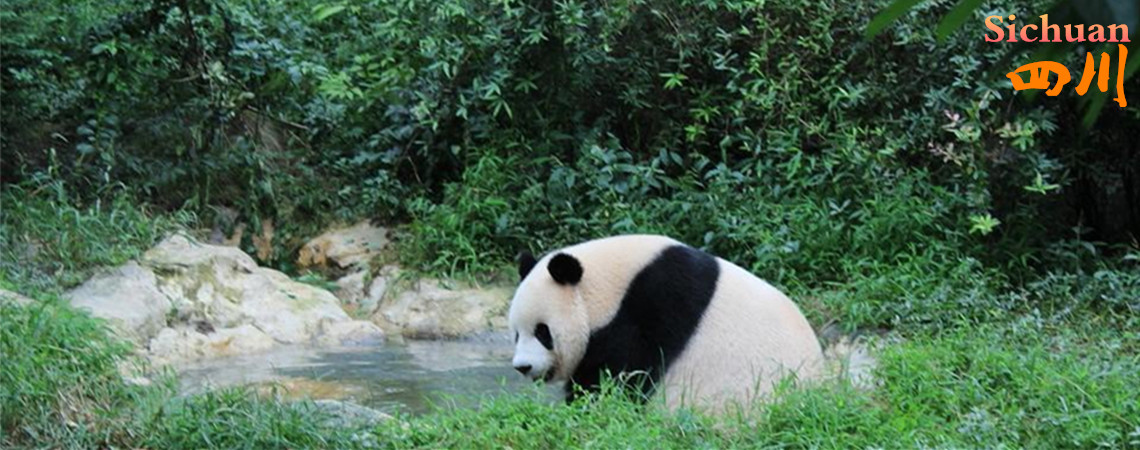Geography of Sichaun
The topography over the whole province differs enormously from east to west with complex and various terrains. The terrain of China’s mainland forms a flight of three steps in terms of altitude. Sichuan lies between the first step, namely Qinghai-Tibet Plateau and the second step, namely the Middle-lower Yangtze Plain. It is high in the west while low in the east, demonstrating a distinct disparity in altitude. Plateaus and mountainous regions can be seen in west Sichuan at altitudes above over 4,000 meters, while basins and hilly areas can be found in the east, at altitudes above 1,000 to 3,000 meters. The whole province can be divided into three major parts: the Sichuan Basin, the SichuanNorthwest Plateau and the Sichuan Southwest Mountains.
History of Sichuan
People of Sichuan
Sichuan Province is inhabited by multiple ethnic groups. There are 55 ethnic groups with a population of 4.22 million. The Yi, Zang(Tibetan), Qiang, Miao, Hui, Mongolian, Tujia, Lisu, Manchu, Naxi, Bouyei, Bai, Zhuang, and Dai are indigenous ethnic groups....More
Sichuan Tourism
In terms of tourism development speed, Sichuan is faster than national average while Ganzi, Aba and Liangshan are also faster than Sichuan. Sichuan Tourism Development Committee indicated that China National Tourism Administration has specified brand new tourism strategies and Ganzi and Aba have been selected as the first batch of pilot areas in China. Sichuan will also take good advantages of universe tourism to create world level tourism destinations including big Jiuzhai, big Shangri-La, big Panxi and so on.
As early as 2011, Ganzi and Aba have started to try universe tourism, propose development ideas including universe resources, universe planning, universe building, universe participation, and diversity, gather resources and strength, and spare no efforts in aspects including transportation infrastructure construction, developing and upgrading tourism scenic spots, digging ethnic cultural depth and so on which no only promoting the rapid development of tourism but also drive the development of regional economy and society.
Sichuan Economy
The local GDP of Chengdu area surpassed one trillion RMB in 2015. The number of cities (states) whose GDP surpassed 100 billion RMB and counties (cities, districts) whose GDP surpassed 10 billion RMB increased by 13 and 46, respectively. Tainfu New District was approved as a national level new district and Panxi was approved as the first national strategic resources and innovation development pilot zone. The new industrialization, urbanization and the integrated rural and urban development strategies were launched. The proportion of three industries adjusted from 14.4:50.5:35.1 to 12.2:47.5:40.3. The income ratio of urban and rural residents decreased from 2.8:1 to 2.6:1. The urbanization rate rose from 40.2% to 47.7%. Moreover, 19.4% villages have met the fundamental requirements of Happy and Beautiful Village. New progress has been accomplished in innovation-driven development. The contribution rate of scientific and technological innovation to economic growth reached 50%. The output of high-end industries increased 1.7 times. The integration between the military and civil sectors maintained good development momentum. The patent ownership per ten thousand persons rose 3.3 times. Non-public economy accounted for 60.7% of the local GDP. The Yangtze River Upstream Ecological Barriers were almost completed and the forest coverage increased from 34.8% to 36%. The national targets of energy conservation, emission reduction, and environmental protection have been fully accomplished.
In 2015, livelihood revenue in the general public budgets reached 2 trillion yuan, 2.3 times of that in the 11th Five-Year Plan Period. 4.573 million jobs were created in urban areas. The per capita disposable income of urban and rural residents grew by 11.3% and 13.7% respectively. The social security systems including the basic pension systems for rural residents and non-working urban residents and medical insurance were improved. The poor rural population was reduced by over 9.76 million. Rural poverty head count ratio reduced from 20.4% to 5.8%. 24.98 million rural residents, teachers and students gained access to safe drinking water and 358,000 rural households gained access to electricity. Dangerous sections of township and county highways were all installed with safety barriers. Sichuan completed the rebuilding of 3.07 million units of dilapidated urban and rural housing and rundown urban areas. Sichuan has taking the leading role in implementing housing providing action for migrant workers in China and supplied 60,000 units of public renting housing for migrant workers. In terms of compulsory education, Sichuan comprehensively implemented the policy of exempting textbooks, miscellaneous fees, and stationary fees and providing subsidiaries. The annual rate of gross enrollment rate for kindergarten and high school reached 2.9% and 2.6%. Sichuan strengthened the development of rural sector and cultural industries enjoyed sound and healthy development. Sichuan has also achieved steady progress in health care, family planning, and the disabled sector. Public fitness programs and competitive sports were developed into new stages. The livelihood enhancement in areas with concentrations of ethnic minorities achieved remarkable progress.







